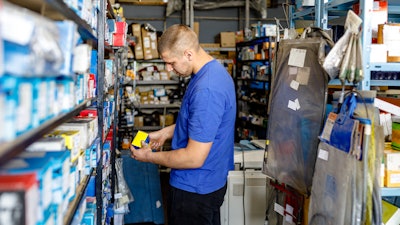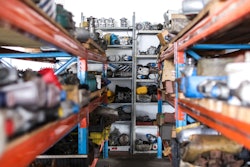
Dealerships across the industry are increasingly facing a common issue — the rising cost of parts means they must either raise prices significantly or see margins shrink. The impact to the bottom line is causing them to look for other areas to cut expenses, shining light on some areas that have previously been overlooked.
One of these commonly overlooked opportunities is improving productivity in the parts team. When successfully executed, this results in reduced overtime and the prospect of getting right-staffed by removing low-performing employees.
A dealership group KEA has a long-time working relationship with recently asked for assistance analyzing their lower performing locations. They contacted KEA to discuss parts performance benchmarks to assess productivity. Specifically, they wanted to measure performance of employees working the front and back counters, warehouse, and delivery drivers.
[RELATED: Three steps to right-size your parts inventory]
Unfortunately, differences in department volumes and role duties prevent a consistent standard across the board for these benchmarks.
However, no matter the size or setup of a shop, there are actions to help assess and improve productivity:
- Define primary tasks for each role, a hierarchy of tasks to flex to, and triggers to indicate when to flex. In most parts shops, employees are expected to help in multiple areas to stay busy. But the priority level (or preference) of different tasks varies from worker to worker. It’s management’s responsibility to ensure everyone knows exactly what they should be doing at any given time based on available work. Keep the flexing triggers simple, like the number of customers in the shop. Also define triggers to flex back to the primary tasks as work becomes available in those areas. Not only will this system allow for greater accountability, but it will also reduce employee frustration from the team not being aligned on workload priority.
- Create, document, train, and audit a standard process for every function. Don’t assume that the best process is clear to everyone, or that new employees can pick up best practices just from watching more tenured employees. Documented standard processes that are trained to all employees using the “tell, show, do” method are essential in reducing variation and waste. The seconds or minutes saved each time a task is performed using the most efficient process will add up and translate to dollars of additional profit.
- Have a metric to measure each primary function and a goal for each metric. A massive amount of data is accessible for parts departments from several sources. Examples of starting places are monthly invoice lines per counter person, hourly part pieces receipted and pulled per warehouse person, or daily deliveries per driver. Once the metric is defined, create a goal for incremental improvement and ensure the team knows the goal.
- Implement a strategic layout of the stock room. This doesn’t have to be complicated. Meaningful improvement can be made from simple actions like assessing the 100 fastest moving parts and moving them closest to the counter or putting complementary parts in adjacent bins.
- Optimize deliveries by analyzing and adjusting your delivery area and prices. Find out the true cost of each delivery mile, including what it’s costing in fuel, vehicle maintenance, preparing the order, loading the truck, personnel expenses, etc. After calculating the true cost, adjust pricing to reflect that true cost and still achieve the desired profit. This should also lead to conversations with customers about the delivery frequency, minimum order amount, and delivery method that’s optimal for both parties at the new pricing.
- Ensure each employee understands the reasons why changes are being made, what winning looks like for their position, and how they impact the big picture goals. Changes often fail due to under-communication of the reasons for change and failure to get bottom-up support. Involving high-performing employees from our second action above is a great way to get their buy-in. Engaging employees in team goals and helping them understand how their contributions affect those goals can tap into their competitive nature and drive problem solving at the ground level.
[RELATED: KEA holding webinar on improving parts staffing productivity]
Of course, analyzing the data only points in the direction of the root cause of waste. Time on the floor observing processes and talking to the team will always be vital for real improvement. Once these proven methods have been implemented, the same metrics can be used to assess the progress achieved instead of using them to find out where the problems are.
Management philosopher Peter Drucker believed that acting without thinking is the cause of every failure. How much thought has gone into measuring, tracking, and improving the productivity of your parts department?
If you can’t confidently answer that question, there’s probably room for fast and meaningful improvement.









